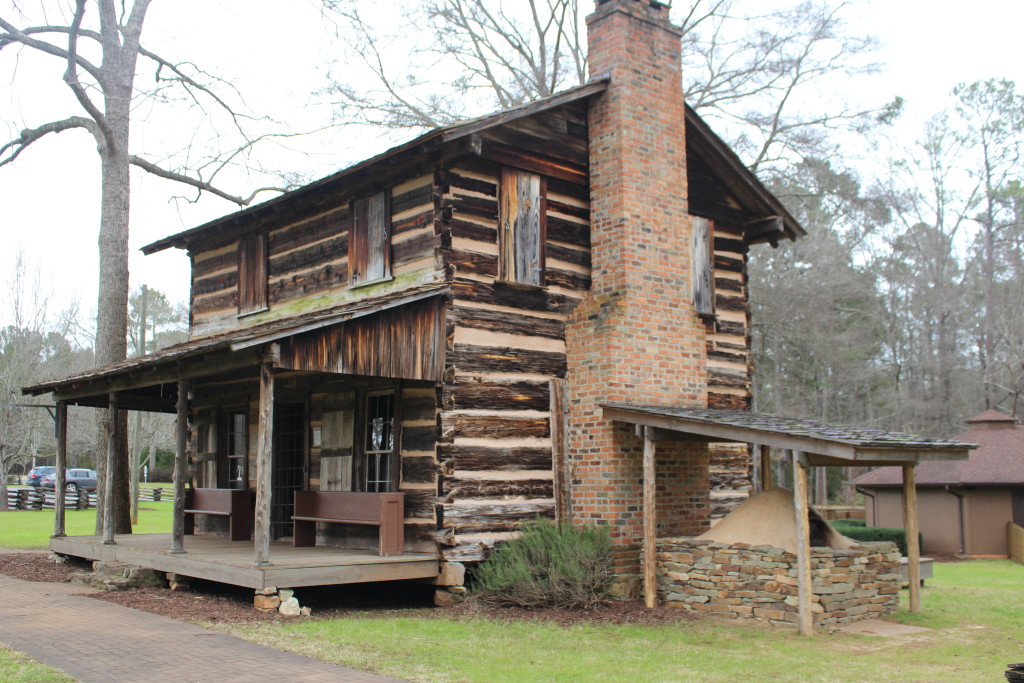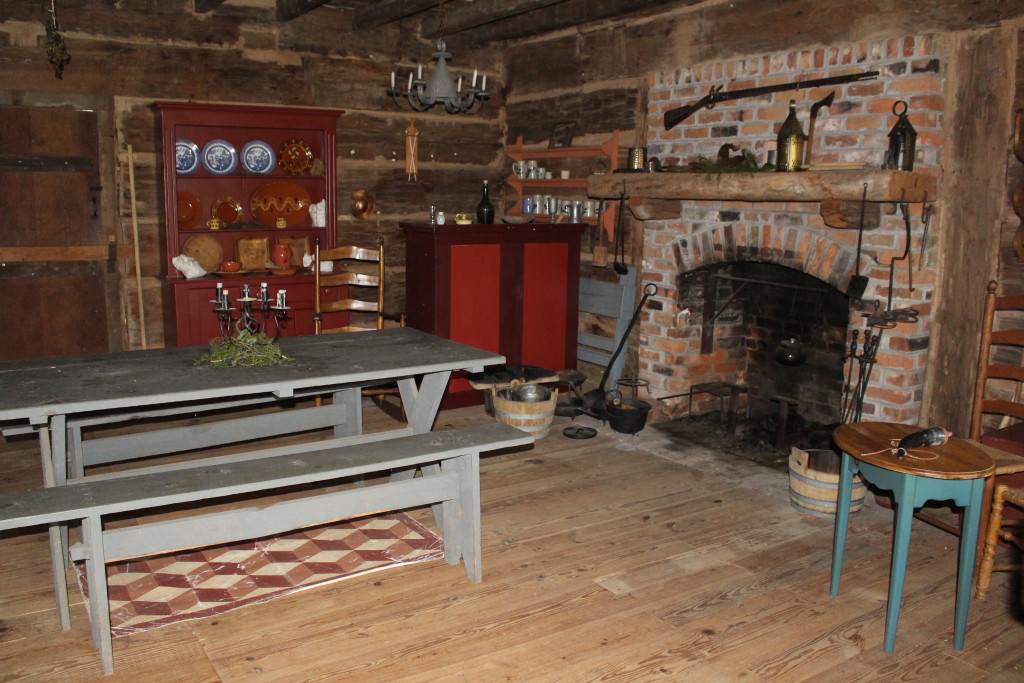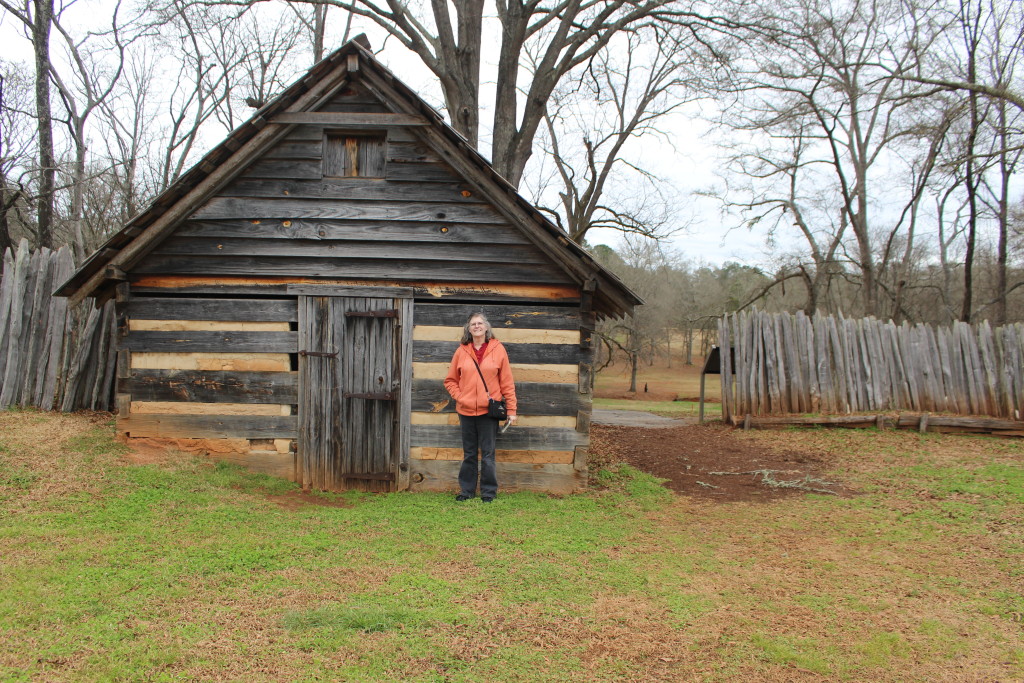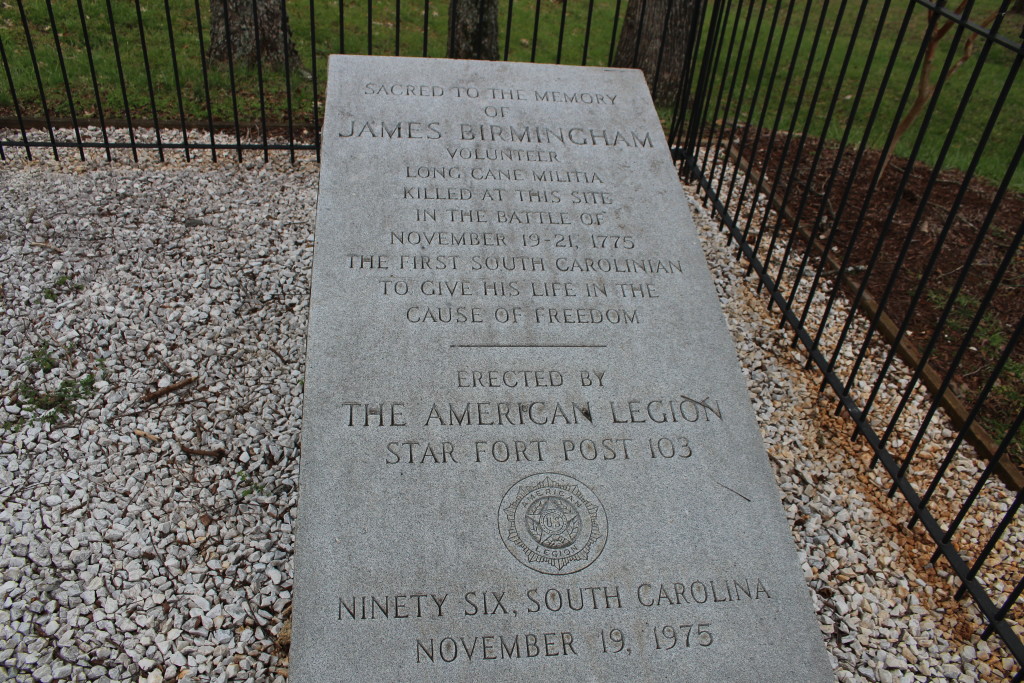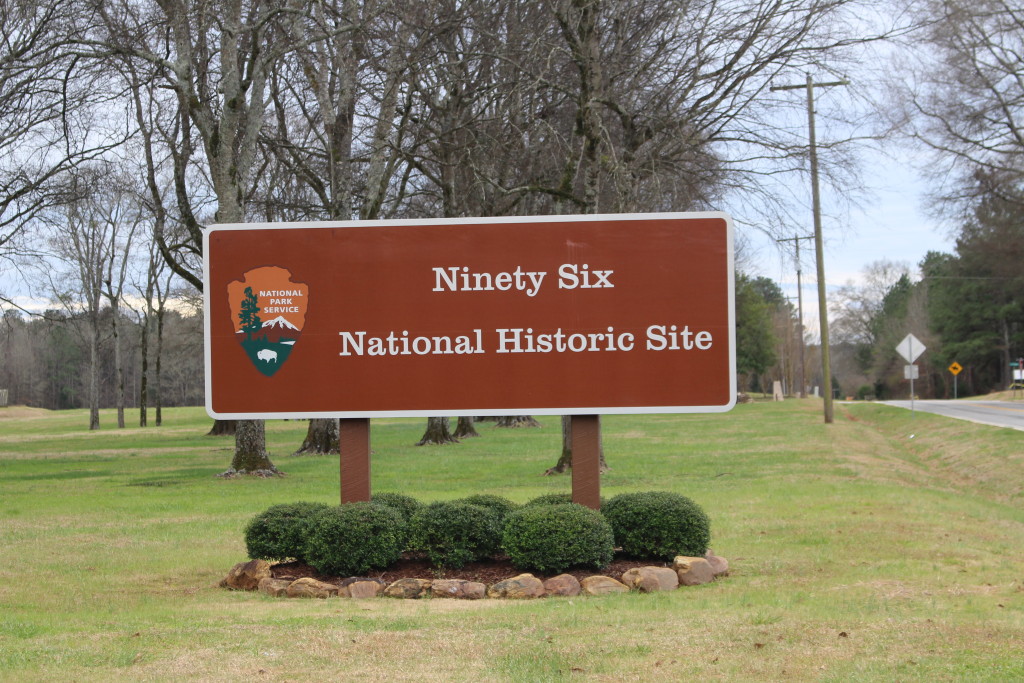
The town of Ninety Six was established in 1751 as a trading post with the Cherokee: the trading post was 96 miles from the large Cherokee city of Keowee, near today’s Clemson, South Carolina. Several Indian trails intersected at Ninety Six and it became a growing community on the frontier. When the white settlers stole too much Cherokee land, the town of Ninety Six became subject to attack as the closest settlement to the heart of the Cherokee nation. Consequently the settlers in the area built a stockade for protection. This was used during two Indian attacks on the town which were repulsed by the settlers in the stockade. In 1761 the Cherokee signed a treaty with the British which provided some security to the town of Ninety Six and the town grew.
On November 19, 1775, the first major battle of the Revolutionary War in the south took place in Ninety Six when 1,900 Loyalists attacked the stockade defended by 600 Patriots. The “battle” ended in a draw with only few men killed. But the town of Ninety Six became a Loyalist stronghold for the rest of the Revolutionary War. It became the western-most outpost of the British in the south and they built an earth-works fort shaped like a star beside the town.
After the Patriot “defeat” at Guilford Courthouse, Nathanael Greene led his Patriot army to Ninety Six. Because Cornwallis had withdrawn to the coast, Greene felt confident he could take the town and the fort. He attacked the fort on May 21, 1781 with 1,200 soldiers and militia. However, just as Ninety Six had withstood the attack of the Cherokee and the Loyalists, the 500 Loyalist soldiers, led by Colonel John Cruger, inside the fort held off the much larger Patriot force.
Thus began the siege of Ninety Six, the longest siege of the Revolutionary War, with the Patriot army surrounding the fort and town. Colonel Thaddeus Kosciuszko, a Polish immigrant and military engineer, directed the siege operations. Sappers (trench diggers) began digging a series of parallel and approach trenches. By June 10 they were within musket range of the fort. Kosciuszko also directed the men to dig an underground tunnel that would head under the star fort earthworks and come up into the middle of the fort. It looked like the fort would be taken soon by the Patriots.
But then Greene learned that a force of 2,000 British troops were marching to the relief of the town. Greene decided to lead an attack before the reinforcements could arrive and trap his army between the two forces. On June 18, Greene launched an ill-fated attack that did very little damage to the fort or to the Loyalist forces. Fortunately, for Greene, there was also very little damage to the Patriot forces, aside from a “forlorn hope” troop of 50 men that had tried to force a way through the earthworks in hand to hand fighting.
This repulse decided the contest, and Greene withdrew his army during the night of June 19. Cruger and the Loyalists had won the victory, but the British decided the cost of holding Ninety Six was too high. When the British reinforcements arrived at Ninety Six, they told Cruger and his men that they were abandoning the fort and the town. As the Loyalists marched out of Ninety Six a couple of weeks later, they set fire to the town and the stockade as they abandoned the backcountry of South Carolina to the Patriots.
Today Ninety Six is again a town, although north of the original settlement along the railroad established almost a century later. The original town site has some restored buildings, part of the stockade wall rebuilt, and the original earthworks star fort. You can also see the trenches dug during the siege. There is a nice one-mile walking trail and a reconstructed log cabin.

